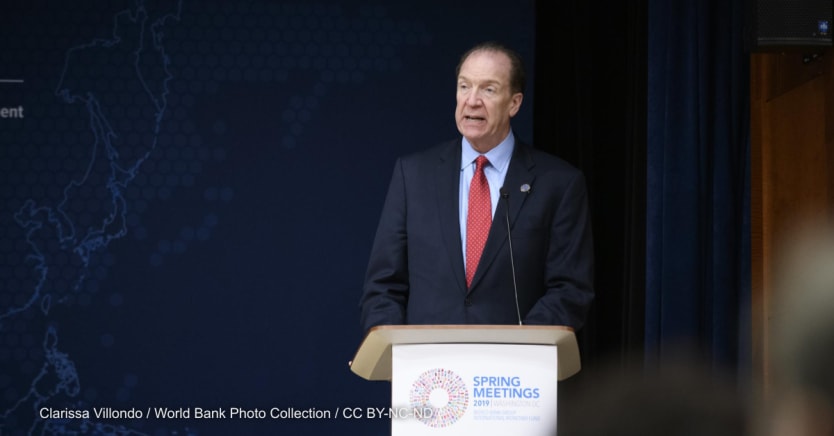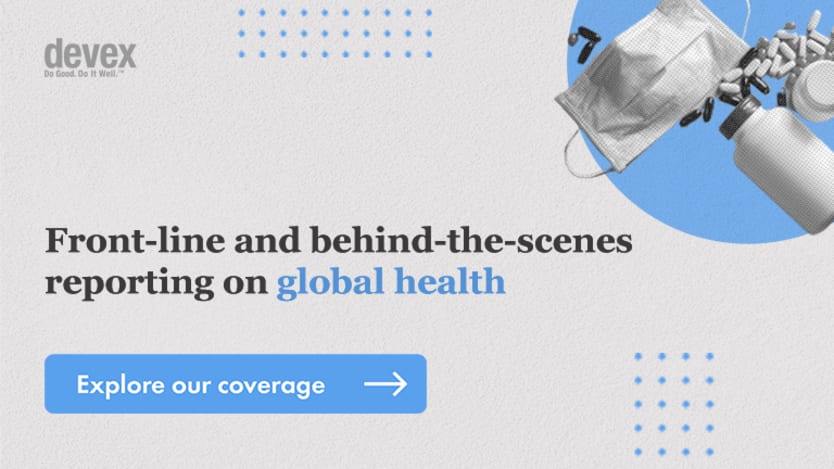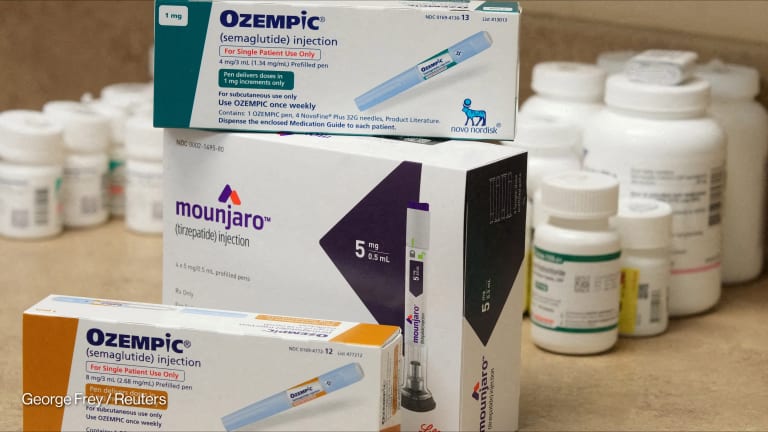
Wealthy donor nations often make big announcements about their plans to give COVID-19 vaccines to lower-income countries, but the actual delivery lags far behind, the head of the World Bank has warned.
Sign up for Devex CheckUp
The must-read weekly newsletter for exclusive global health news and insider insights.
Donor countries also complicate matters by not being transparent about which COVID-19 vaccines they are donating and when, David Malpass said Monday at an event hosted by the Center for Strategic and International Studies. Each type of vaccine requires slightly different kits to actually get the shots in arms, he noted.
“Donors might announce donations and not say of which type of dose, and that makes it very hard to plan for the developing countries,” Malpass said.
He added that it is critical for receiving countries to have precise dates for expected deliveries, saying the World Bank could help fund purchases and temperature-controlled supply chains, “but we have to know where and when.”
Vaccine swaps: The World Bank and other global institutions are pushing donor countries to swap their vaccine delivery contracts, which have early fulfillment dates, for lower-income nations’ contracts with later dates. This could help speed up the delivery of first doses in low-income nations, while advanced economies will still have supplies ensured for the future.
Hardest hit: Deliveries to Africa lag the most, Malpass said, and the continent is still seeing low vaccination rates. This hurts economic recovery in low-income nations, especially amid rising inflation and debt levels.
“We don’t have a workable mechanism now to get debt relief to the poorest countries,” he said.
Malpass also noted that literacy skills in low-income countries are slipping sharply because of the pandemic.
“Seventy percent of kids in low-income countries can’t read a basic story, because they’ve been kept out of school,” he said, adding that this figure was previously 55%.





